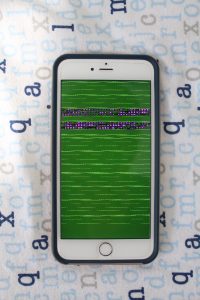Beta forms of iOS 10.3, the first was issued a week ago, create cautioning messages when you attempt to run more seasoned 32-bit applications. The message, initially found by PSPDFKit CEO and application engineer Peter Steinberger, cautions that the applications “won’t work with future renditions of iOS” and that the application must be overhauled by its designer to keep running. The applications still keep running in iOS 10.3, yet it appears to be likely that iOS 11 will drop bolster for them totally.
In spite of the fact that the mistake message doesn’t expressly say the application’s 32-bit or 64-bit support, it’s certainly just more seasoned 32-bit applications that trigger the notice. Comparable messages that did expressly specify 64-bit support were available in the betas of iOS 10.0, yet they were evacuated in the last arrival of the product. Apple has required 64-bit bolster for all new application entries since February of 2015 and all application overhaul entries since June 2015, so any applications that are as yet tossing this blunder haven’t been touched by their engineer in no less than 18 months (designers could include 64-bit bolster as ahead of schedule as 2013, yet a large portion of them selected not to until it turned into a necessity).
To a limited extent in light of Apple’s aggregate control of its equipment, working framework, and application conveyance stage, iOS’ move from 32-bit programming to 64-bit programming has been exceptionally smooth and brisk. The initial 64-bit release of Windows was discharged in 2005, and however 64-bit Windows has more often than not been the default since the Windows 7 time, there’s still a 32-bit adaptation of Windows 10, despite everything it transports on some low-end equipment. Macintosh OS X (now macOS) started to incorporate 64-bit bolster with the OS beginning in 2003, a procedure that wasn’t finished until 2012; current variants of the OS can even now run 32-bit applications that aren’t generally inconsistent. Android’s 64-bit move is finished in the event that you have a more current telephone, yet some new telephones still ship with 32-bit Android, and more established telephones (even those that really get programming overhauls and have 64-bit equipment support) will keep on using 32-bit Android.
Expelling 32-bit bolster from iOS would likewise dovetail with another exertion Apple is making to expel old and unmaintained programming from the App Store so individuals can’t discover it in any case. Apple is endeavoring to contact application engineers so that any individual who needs to upgrade their applications still can, yet they won’t be permitted to remain up uncertainly. On the off chance that iOS 11 drops bolster for the 32-bit iPhone 5 and 5C and the fourth-era iPad, expelling 32-bit application support could likewise permit Apple to strip every one of the 32-bit code out of iOS completely.



